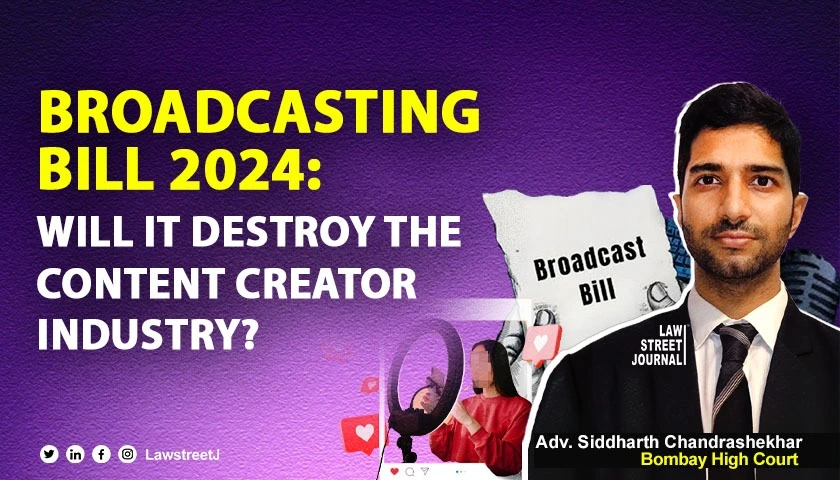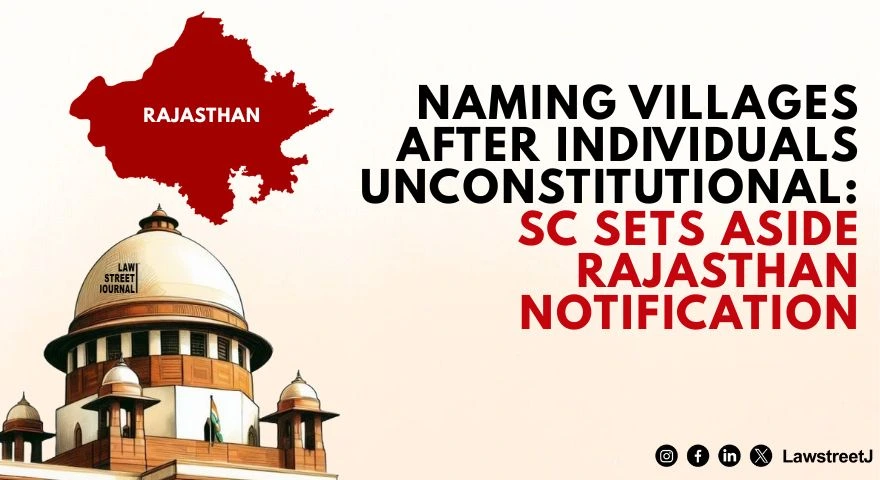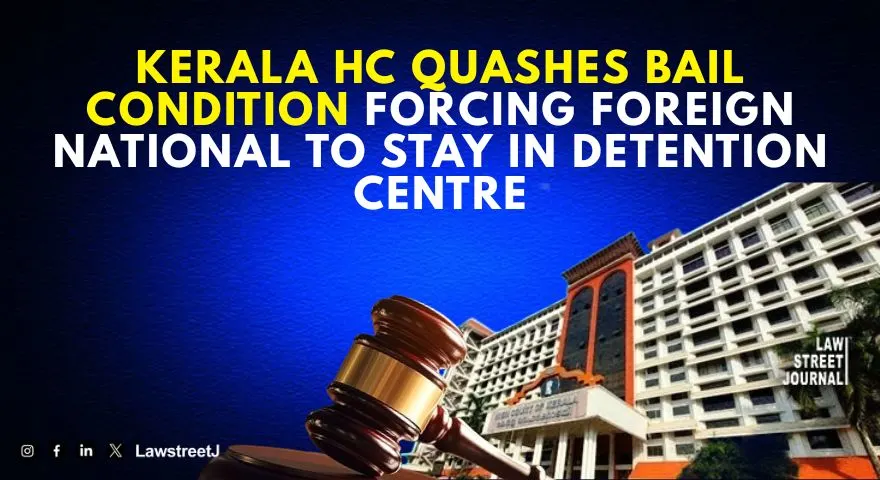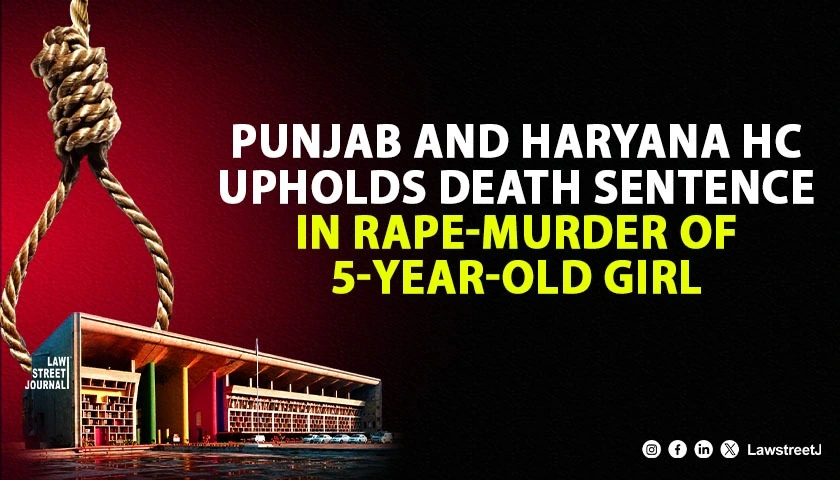1. Why the Withdrawal of the Draft Broadcast Bill Raises More Questions than it answers?
A Bill Disguised as a Media Shield or Sword?
Although the 2024 bill aimed to regulate digital news broadcasters & OTT platforms by imposing stringent content regulations and mandatory registration, its ambiguity left everyone in a state of confusion.
Initially proposed as a modern replacement the 1995 Cable Television Networks (Regulation) Act, the sudden withdrawal of the Draft Broadcast Bill, has left many puzzled & its withdrawal (and replacement/revert, albeit for the time being with the 2023 bill for discussion and comments) hints at deeper, unresolved issues having sparked more debates than it has now quelled. The Bill was far more than a rehash of the old cable television laws. It ventured into areas typically regulated by other laws, such as the IT Act, creating overlap and ambiguity.
When an Attempt to Regulate Creates More Confusion than Clarity
The move seems like a strategic retreat, possibly to introduce changes that quell criticisms while maintaining the core elements of control. A potential revised Act could include even tighter regulations under the guise of ‘public interest,’ leaving stakeholders in a perpetual state of uncertainty. The decision to revert to the erstwhile 2023 Bill left observers pondering whether a more polished version would soon reappear, potentially with even more stringent provisions.
This has now left both the legal and media community with more speculation than answers. Was it public outcry, legal ambiguities, or internal dissent that led to the retreat?
Its withdrawal now begs the question: Are our law makers recalibrating strategy due to backlash, or is there an even more stringent version in the works? Will the final Act offer clearer definitions, or cast a wider net over the digital ecosystem?
This wasn’t about oversight—it opened Pandora’s box on how far-reaching the regulatory net could be The Bill expanded its reach not only to OTT platforms but also to social media creators & independent digital news broadcasters. The bill categorised anyone creating content related to current affairs online, from YouTubers to travel bloggers, as ‘Digital News Broadcasters’, dragging a wide range of online creators into its purview. The definition of “news” was vague, leaving experts questioning whether even an incidental post about a news event would make someone a “Broadcaster.” This resulted in a massive backlash from digital creators and rights activists who saw it as an unnecessary clampdown on free speech.
This unexpected overreach caused ripples, especially considering a number of popular YouTube creators & Twitter personalities found themselves under political scrutiny. The expansion of the Bill’s scope to cover a massive chunk of online content creators & social media influencers suggested that the Ministry of Information & Broadcasting (‘MIB’) was preparing to reign in control over digital spaces. But by pulling the Bill back, it appears they’re recalibrating—maybe to tighten the screws further or make it more palatable.
The withdrawal came at a time just when its intricacies became clearer to stakeholders, leading to confusion rather than closure. While the stated aim was to modernise broadcasting laws and extend regulations to the digital world, it left many unanswered questions in its wake. The withdrawal only amplified concerns regarding whether this was an attempt to stifle criticism, or a genuine effort to bring about much-needed regulation?
The sudden withdrawal of the draft Broadcast Bill has sent ripples across the digital landscape in India. It raises the classic legal riddle: What’s brewing behind the scenes?
Was the withdrawal of the 2024 iteration of the Bill a response to growing criticism, or is a more stringent version about to land? The move has left policy analysts questioning the intentions of the law makers here.
So the proverbial question here is, is this a Curtain Call or an Encore? …a Pause or Pivot?
2. What Was There in the Bill?
From OTT to Data Diktats— Here’s a small glimpse of what the 2024 Bill had
‘Digital News Broadcasters’: A Blanket Definition covering anyone producing news-related content online—whether a major media outlet, an “influencer”, or even a small-time “YouTuber”—would be classified as a ‘Digital News Broadcaster.’ This meant mandatory registration & compliance. This included anyone producing content about current affairs on platforms like YouTube, Instagram, or even smaller blogs, potentially affecting millions of digital creators. The requirement for mandatory registration extended to individuals and entities without clear thresholds for how many viewers or subscribers would trigger this need.
Content Evaluation Committee: An omnipresent body to certify compliance with a stringent content code. The bill also introduced Content Evaluation Committees (CECs), placing the onus on content creators to pre-screen their material before publishing—a costly & burdensome process, particularly for smaller creators. Content creators would be required to form their own CEC. Yes, a mini-censorship board right on your home turf. Representing diverse social groups, these CECs would screen all content before it hit the web. It’s a bureaucratic red tape nightmare, especially for individual creators or small teams.
Data Localization: Content Regulation and Data Localization OTT services & digital broadcasters would have to store data in India, raising concerns about privacy and potential government overreach. This also signalled a step toward stronger surveillance.
Self-Regulation with a Twist: A two-tier system where broadcasters would "self-regulate," but with government oversight waiting in the wings. The bill proposed a system where broadcasters would "self-regulate" through government-mandated committees, keeping a firm hand on content approval.
Safe Harbour in Jeopardy: Intermediaries failing to comply with the government stood to lose their immunity from third-party content liabilities.
Under its broad definitions, digital news broadcasters were defined as anyone engaging in a "systematic business" of broadcasting current affairs—meaning even a tech vlogger on YouTube could potentially fall under its ambit.
The bill’s breadth even covered online advertising networks, which was striking. What made it more peculiar was it’s expansion into areas previously untouched, such as anti-piracy laws, “Right of Way” for infrastructure deployment, and registration requirements for digital broadcasters.
Proposed penalties for non-compliance, including suspension of broadcasting licences, raised concerns over selective targeting of media outlets critical of the government. Provisions also enabled the government to order the removal of online content that didn’t meet its standards, effectively giving it the power to censor at will.
It sought to regulate a vast array of content, from Netflix to YouTube and even to social media influencers.
This heavy-handed approach threatened to undermine the diversity of voices in India’s media ecosystem, especially smaller, independent creators who might not have the resources to comply with such stringent requirements. It risks creating a media landscape dominated by large, compliant players, with dissenting voices silenced.
It even sought to regulate online advertising. The Bill's inclusion of a compliance burden where digital creators had to notify the government about their activities and submit their content to internal committees for certification was a game-changer. While intended to create a level playing field, it arguably placed the casual online content creator and major OTT platforms on the same legal footing.
Perhaps most contentious was its extension of powers to seize broadcasting equipment & the potential revocation of broadcasting rights for content deemed harmful to public interest or national security. Critics saw these provisions as disproportionate for the digital age, where content creation is more democratic & decentralised.
3. Critics Are Terming It Draconian. What Do You Think About It?
The vague language around what constitutes "Indian content" or "harmful" material leaves too much room for interpretation—dangerous in any democracy. Critics calling it "Draconian" seems like an understatement here. This Bill has the potential to clamp down on digital freedoms in ways that are truly dystopian.
Moreover, the Bill empowered the government to appoint members to the Content Evaluation Committee & Broadcast Advisory Council, raising fears that these bodies would become mouthpieces for the administration rather than independent watchdogs.
The proposed regulatory framework for social media accounts—forcing them to register as digital news broadcasters—isn’t just cumbersome; it’s Orwellian. One can’t help but draw parallels with Orwell’s vision of media control in a dystopian state.
The bill with its ambiguous terminology cloaked in regulatory language, left the door open for significant control by the incumbent over what could be published online which had far-reaching scope gave the powers that be excessive authority to decide what content was appropriate for public consumption.
(Social) Media now plays a critical role in holding those in power accountable, such overreach could stifle free speech. Imagine a scenario where every critical post, YouTube video, or independent news article has to navigate a labyrinth of regulatory checks before being allowed to go live. Does the Bill hold the potential to stifle free speech under the guise of protecting viewers? Certainly.
The mandatory registration requirements, combined with penalties for non-compliance, point to an era where online expression could be heavily censored under the guise of regulation.
The fact that Content Evaluation Committees must pre-approve content sets a dangerous precedent for editorial independence, especially since the process is to be carried out by committees whose formation is government-controlled.
Moreover, the scope of the bill’s criminal liability provisions which could apply to intermediaries like WhatsApp, Signal, or Telegram gives the government sweeping powers over platforms that host or distribute digital news content. Social media influencers, individual content creators & news portals alike may find themselves walking on eggshells afraid to offend or criticise the government lest they face hefty fines or bans.
The bill could also lead to self-censorship, a chilling effect where creators & news platforms shy away from controversial subjects for fear of being labelled non-compliant. In a democracy, where freedom of speech is considered a fundamental right, such provisions go beyond regulation—they amount to control.
When a Bill attempts to rope in everyone from YouTube stars to Instagram influencers under the same regulatory net as mainstream TV news broadcasters, it starts to feel like overreach. Independent content creators now suddenly faced the threat of becoming government regulated entities. It’s a recipe for stifling creativity, discouraging free speech, and turning digital creators into state-regulated entities.
Not only would creators need to set up content evaluation committees (CEC), but they would also need to publicly disclose the members of these committees—an obligation that could expose them to personal risk. The penalties for non-compliance were steep—ranging from hefty fines to potential imprisonment.
While accountability in media is crucial, especially in the age of misinformation, the sweeping nature of this Bill felt disproportionate. There is a fine line between regulating harmful content and silencing dissenting voices.
Forcing platforms like YouTube & Instagram to share user data with the government or face criminal liability takes the issue to a new level. Imagine, a creator shares a political opinion, and suddenly the platform must hand over their information to the state. This doesn't merely infringe on privacy—it steamrolls over it. The inclusion of advertising networks also hints at a broader regulatory push into e-commerce & advertising, areas previously outside MIB's purview.
The 2024 Bill represented the intention to regulate not just the content but the very infrastructure of the digital economy.
4. Is This a Step Toward Total Censorship?
Yes, the Bill inched closer to state-run broadcasting than to a self-regulating, transparent media ecosystem. The provisions on content evaluation & government intervention create an environment where dissenting opinions might be easily quashed.
The inclusion of independent content creators within its ambit is especially troubling. This shift could make every opinion posted online subject to statutory scrutiny—perhaps not outright censorship, but certainly a chilling effect on free expression. Digital platforms like YouTube and Instagram, once bastions of independent thought, may now be at risk of becoming overly cautious, censoring themselves to avoid penalties.
Though not explicit, the mechanisms embedded in the Bill—such as mandatory content evaluation and compliance with vaguely defined standards—would place content creators in a position of fear and self-censorship.
Even the requirement for social media platforms to share user data with the government suggests a shift toward surveillance rather than protection. Platforms like YouTube, Instagram, and even smaller blogs would have been forced to rethink their content strategies, worrying about the consequences of straying from government-approved narratives.
The vagueness of terms like ‘systematic activity’ & ‘news content’ means that any platform, from a personal blog to a large news organisation, could fall under this law's purview. Moreover, the requirement for periodic renewals of registration certificates—subject to government clearance—gives the Centre a tight grip on which voices can continue to broadcast.
While the Bill didn’t spell out direct censorship, it paved the way for soft censorship—where creators begin self-regulating out of fear, pushing only ‘safe’ content and avoiding controversial issues altogether. This chilling effect could be just as damaging as overt censorship.
While the government has a valid argument about establishing order in a rapidly expanding and unregulated digital landscape, on the other hand the bill gives unprecedented powers to censor or block content.
Let’s not forget the Broadcast Advisory Council, a body appointed by the government with powers to demand the deletion or modification of content. This council’s ability to take channels off-air or impose penalties for "non-compliance" turns what should be a self-regulating media industry into a puppet of the state.
Additionally, the inclusion of non-traditional media like social media users under a "digital news broadcaster" umbrella raises alarms. By forcing even small-time content creators to adhere to the same guidelines as larger, legacy media houses, the Bill could significantly chill free expression. For example, an influencer discussing political issues or a journalist tweeting could potentially fall foul of the strict programme codes.
There is also the possibility of increased self-censorship. Content creators, faced with the risk of fines or worse, may preemptively tone down or modify their content to avoid government wrath. This kind of self-censorship is arguably even more dangerous than outright government censorship, as it erodes the space for robust, honest discourse in the media landscape.
By making every news-related digital activity subject to registration, compliance with a Programme Code, and oversight by a government-appointed Broadcast Advisory Council, the Bill is nudging India’s content creators into a corner.
The self-regulatory body seems like an illusion of independence while the statutory authorities pulls the strings. Content creators being required to establish a committee at their own cost to screen content is not just burdensome, but also inherently censorial. How can creators function freely when they are forced to anticipate state disapproval at every turn?
And then there’s the global applicability. The Bill even drags foreign creators into its net. The government is essentially saying, “If your content reaches an Indian audience, you’re under our thumb.” It’s an audacious move, signalling that India wants to regulate digital content on a planetary scale.
If passed in its original form, this bill could easily become a tool for suppression or transmission of any programme likely to promote disharmony or disturb public tranquillity, used to silence dissent or critical voices under the guise of compliance where. While maintaining harmony is a legitimate concern, such vague criteria can be easily manipulated to suppress controversial or critical content.
5. What Changes Will the Government Present Next?
In its next iteration, the law makers are likely to introduce tweaks that appear to address the outcry over excessive control. We could see a more refined version of the Bill with clearer definitions around content evaluation, offering a better balance between freedom and regulation. There may be a push to increase transparency in the self-regulation mechanisms, such as making the Content Evaluation Committee more independent and autonomous from the government. However, the core principles of the Bill are unlikely to disappear. The government has already signalled that it views the media landscape as requiring more control, not less. What we might get is a softer approach to the same endgame: control disguised as regulation.
The government is likely to return with a revised draft that aims to clarify some of the more contentious provisions while retaining its core intent to regulate digital broadcasting.
The government might consider reducing the scope of mandatory registration. Instead of forcing every content creator and influencer to register, thresholds might be introduced based on audience size or reach. This could alleviate the concerns of smaller creators who fear being stifled by expensive compliance measures and the burden of Content Evaluation Committees.
However, the government may still aim to retain some form of control over digital news & OTT platforms, with compliance measures that ensure content is monitored. The core issue will remain—how to regulate without infringing on free speech and creative freedom. The next draft might make some cosmetic changes, but the heart of the bill—control over content—is likely to persist.
The next version could appear more balanced on the surface but still carry the potential for media control. Expect the state to argue that these measures are necessary for combating misinformation, hate speech, and national security threats—thus legitimising their interventionist stance.
More Carrot, Less Stick?
In essence, the government's challenge lies in finding the right balance between curbing the spread of harmful content and protecting the democratic free flow of ideas—especially in a digital age where everyone with a smartphone is a potential broadcaster.
The backlash may lead them to dial down some of the more controversial elements, but don’t expect them to loosen the grip entirely.
Here’s what could happen:
1. Revised Scope for Small Creators: Given the outcry, there may be some sort of minimum threshold for creators who need to comply with the Broadcast Bill. Expect exemptions for small creators who don’t monetise their platforms or have a limited reach. But even these thresholds may be too low for comfort.
2. Clarity on Content Evaluation: The requirement for self-imposed content evaluation committees might be softened, but the concept of pre-approval for certain types of content will likely remain. The government could clarify what types of content need scrutiny to prevent over-regulation of non-political content.
3. More Subtle Social Media Regulation: The criminal liability clause for social media platforms might be tempered, but they may still be retained.
4. Streamlining Advertising Regulations: Advertising intermediaries like Google Ads may see a reduced role in the new version, given the criticism of expanding MIB’s powers in this area. However, the government will not cede control over online ads entirely.
5. Greater Oversight of News Aggregators: While the Bill may have initially excluded “news aggregators” like Google News, this was likely an oversight. Don’t be surprised if these platforms find themselves squarely in the crosshairs in the next version of the Bill.
In conclusion, the government is likely to return with a more tactically toned-down version of the Broadcast Bill. But make no mistake: their objective is clear—control, compliance, and censorship of India’s digital future. Whether it comes through gradual tightening or by blunt force, the government is aiming to draw a firm regulatory line around digital broadcasting.
Blurred Lines
The Broadcasting Services (Regulation) Bill, 2024, was a Pandora's box of possibilities, with consequences that could reshape the Indian media landscape. It aimed to modernise media regulation in India but instead raised alarms over its potential to suppress free expression.
While regulation is undoubtedly essential in an era of misinformation and rapid technological change, it must not come at the expense of free speech & democratic dialogue.
While protecting viewers & consolidating media regulation are the need of the hour, the execution raises serious concerns about overreach, censorship, and privacy violations.
The finally passed Act might come dressed in softer language, but the underlying threat to free speech and independent journalism will remain a cause for concern and the need to protect the space for diverse voices has never been more critical. The current draft, while withdrawn, sends a strong message about intentions of the law makers.
For now, our law makers must strike a delicate balance between protecting the public interest and safeguarding the freedom of expression that drives India’s vibrant digital media ecosystem.
Impact on Survival of Social Media Creators:
Aimed at regulating not just traditional media but also OTT platforms, YouTubers, & social media influencers, which sought to consolidate control over the fast-evolving media landscape.
The Bill sought to treat online content creators—whether YouTubers, Instagrammers, or podcasters—as Broadcasters. If you produced any content that vaguely resembled news or current affairs, you’d have to register under a three-tier regulatory system.
Those sharing news or current affairs content would have to register, comply with the Programme Code, & set up costly Content Evaluation Committees, dragging even the smallest players into the regulatory fold with no minimum threshold for applicability. Got a small blog? Welcome to the labyrinthine world of compliance!
The Broadcast Bill 2024 was a veritable Pandora’s box for the digital ecosystem, expanding the reach of Indian regulation far beyond traditional broadcasters in an ambitious attempt to regulate everyone from Netflix to TikTok creators—yes, even TikTok, which was banned in India but not forgotten by the government.
OTT platforms were similarly roped in, with content regulations expanded to these entities. The bill's language was ambiguous & undefined, especially regarding terms like ‘systematic activity’ & ‘news content’.
The Bill’s evolution will likely be a balancing act between freedom and accountability—a tightrope walk that India’s digital creators & broadcasters will need to navigate.
Freedom Comes at a Price!
Small & medium-sized content creators, especially those on platforms like YouTube or independent streaming services, will bear the brunt of compliance costs. For content creators running on tight budgets, this may either force them into debt or drive them out of the business altogether.
One of the most controversial aspects of the Broadcast Bill is the introduction of specific content timelines and monitoring protocols. The new framework could demand pre-approvals for certain types of content, especially those deemed politically or socially sensitive. This not only slows down production but also kills the spontaneity that defines digital content. In an environment where real-time engagement is key, this delay might severely hinder creators who rely on timely content, like political satire or news commentary.
This "one-size-fits-all" approach places a disproportionate burden on smaller creators who cannot compete with the resources of established networks. Creators will now have to navigate a media landscape crafted for TV channels, where conformity outweighs individuality. The Bill mandates adherence to rules that mirror those applicable to large media houses, meaning expensive legal consultations, mandatory certifications, and potential penalties for non-compliance.
The Broadcast Bill 2024 may bring uniformity and control but at the cost of creativity and free expression. For the thriving community of content creators, it represents not just a legal challenge but an existential one.
[Disclaimer: The views expressed are solely of the author and they do not purport to reflect the opinion or views of LawStreet Journal].






